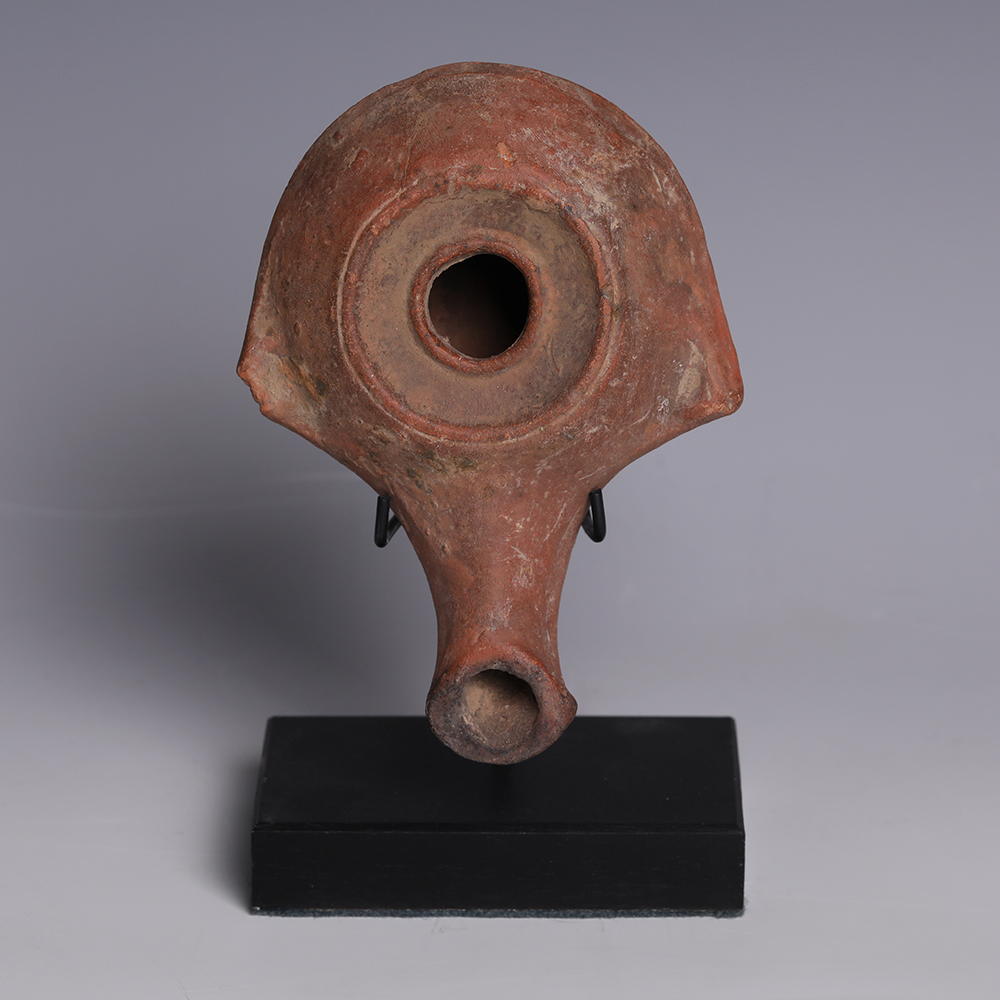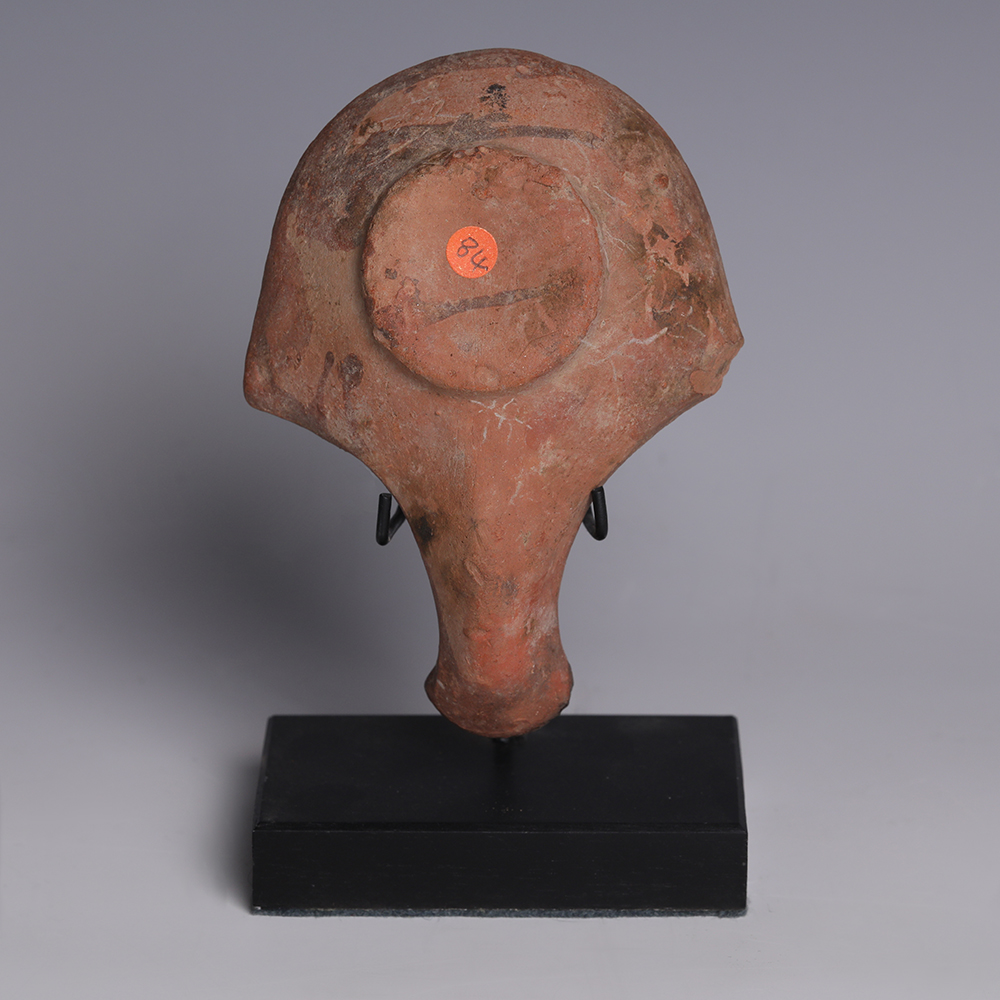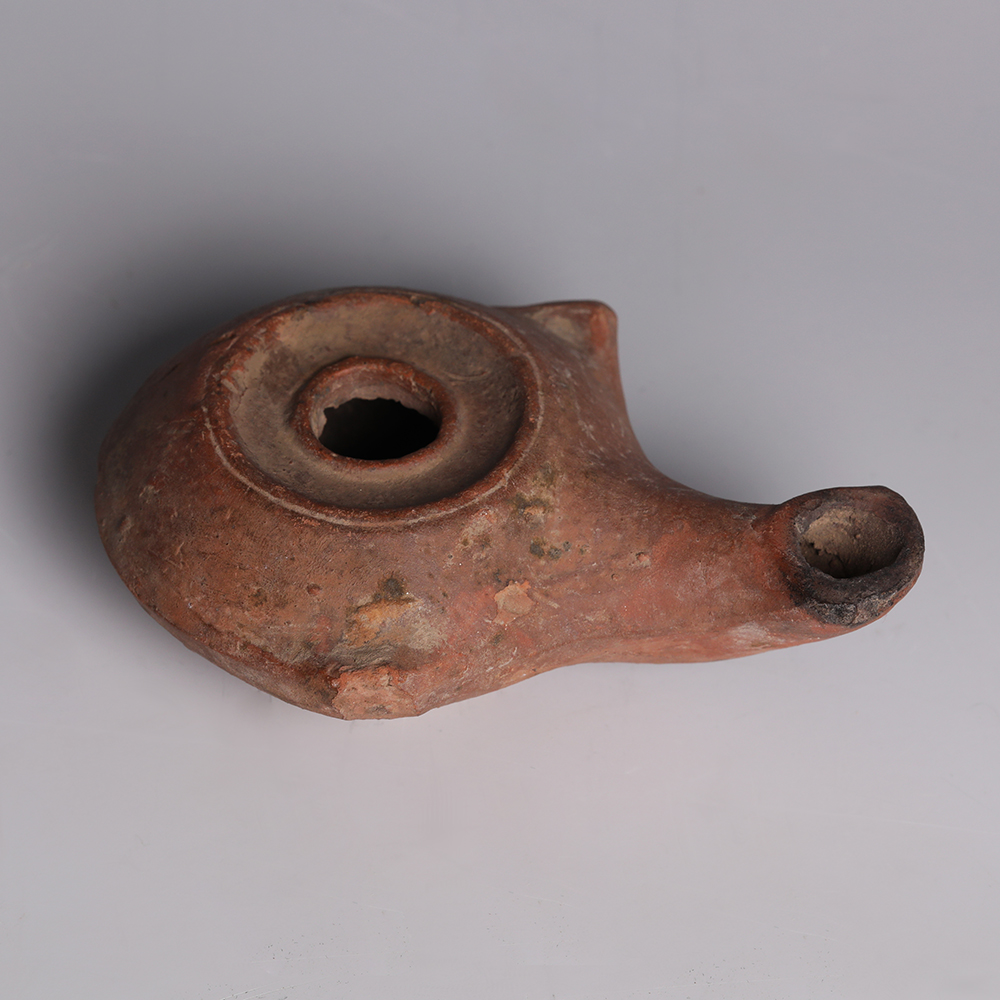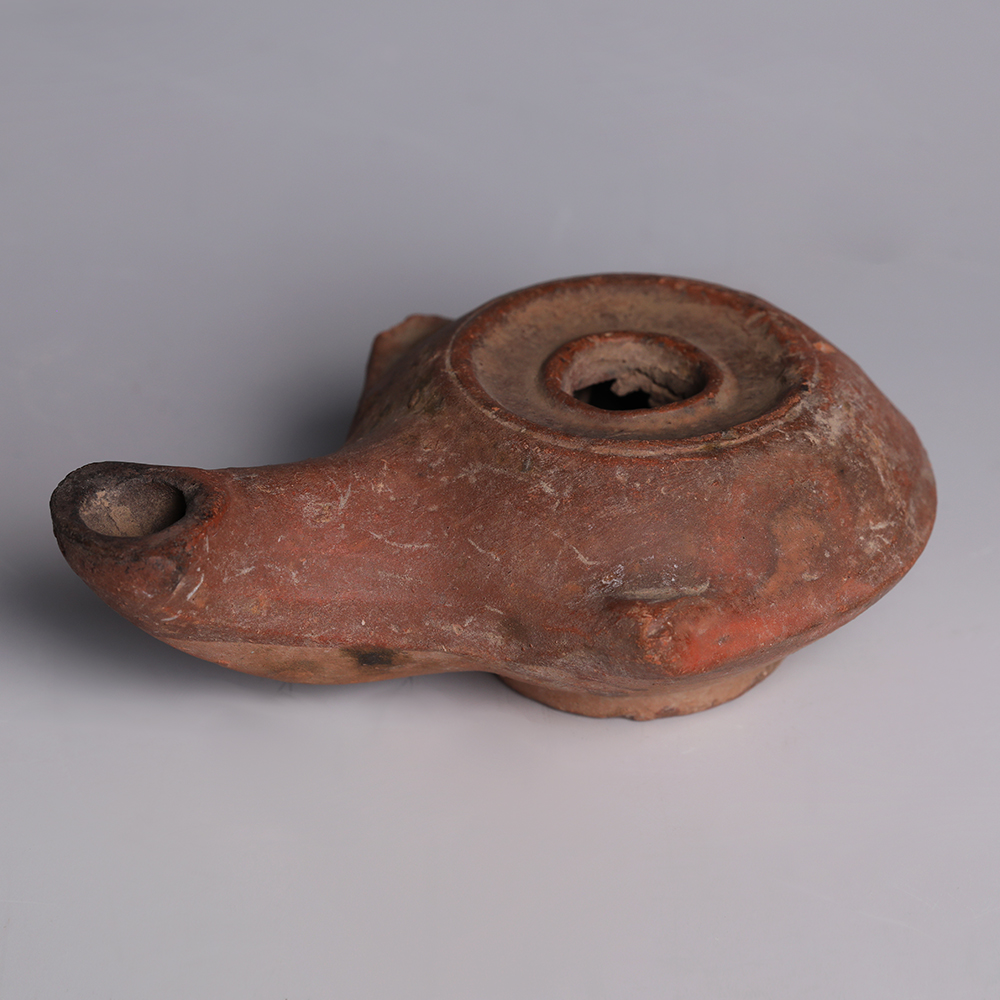This particular shaped oil lamp was popular from the 3rd – 1st century BC, prolific during the Hellenistic period. This particular example heralds the rise of mouldmade lamps, which were made in two halves, each of which comprised a layer of damp clay, impressed in a mould before the two halves of the mould were pressed together. Mouldmade lamps were preceded by wheelmade lamps, and did not start appearing until the beginning of the third century BC. This new method allowed for mass reproduction of oil lamps, as well as greater versatility in their size, shape, and decoration. Examples of this particular shape are linked to ‘Ephesus’ type lamps and are thought to have originated in Asia Minor. Classification is still quite fluid, due in part to the many variants found on examples. This piece, with it’s dark red colouring, suggests an Egyptian origin. Asia Minor examples are often made using grey clay, in comparison.
Hellenistic Terracotta Oil Lamp
$230.24
An ancient Greek, Hellenistic period mouldmade oil lamp, made from terracotta and covered in a red-brown slip. The lamp features a double-convex circular body which leads to a long, tapering, flat-topped nozzle with a curved tip. The body features two pointed lugs at each side. The filling hole is surrounded by a double moulded groove. The base features a circular base ring, which is slightly convex to the centre. The lamp exhibits some blackening around the nozzle from use.
Period: Ptolemaic Period
Provenance: From a private Preston, Lancashire collection, RB, who amassed a collection of over 200 lamps, the majority acquired via a London A.D.A member gallery.
Condition: Very fine condition. Chip to one of the lugs. Some natural erosion to the surface through age. Blackening to the nozzle from use in antiquity. Old collection sticker to base. Stand not included with the item.
SOLD
| Weight | 93.3 g |
|---|---|
| Dimensions | L 10.9 x W 7.7 x H 4.7 cm |
| Culture | |
| Pottery and Porcelain | |
| Region |



